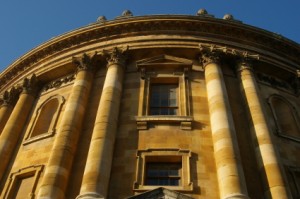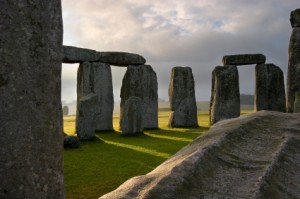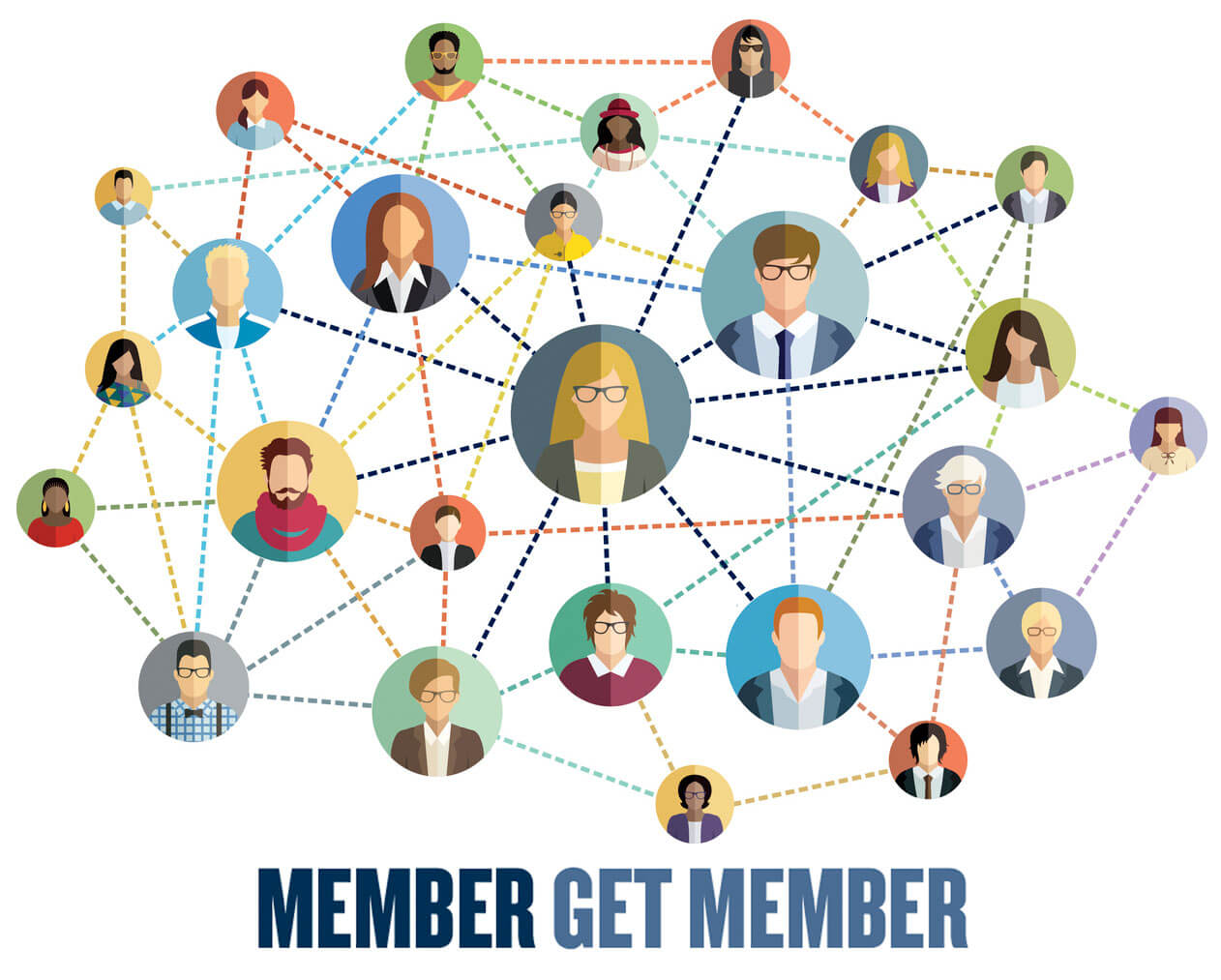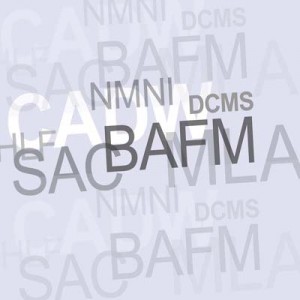 The world of heritage is awash with acronyms. There are so many organisations, all with fancy logos and abbreviated titles, it can sometimes be confusing who's who.
The world of heritage is awash with acronyms. There are so many organisations, all with fancy logos and abbreviated titles, it can sometimes be confusing who's who.
Inside and outside of local and central Government there are countless institutions, lobbying bodies and groups of people or organisations. They can be rather baffling if you’re not a museum practitioner using them on a regular basis.
Do you know your AIM from your ACE, for example?
Here's our ready reference guide to the major players across the sector (with links to their websites).
ACE –
Arts Council England
The national development agency for the arts in England, distributing public money from Government and the National Lottery. They support and promote theatre, music, literature, dance, photography, digital art, carnivals and crafts as well as museums and heritage organisations.
Chief Executive: Alan Davey
http://www.artscouncil.org.uk
ACW –
Arts Council of Wales
Like ACE, this organisation distributes funds from the Welsh Assembly Government as well as Lottery money allocated by the DCMS (see below).
Chief Executive: Nick Capaldi
http://www.artswales.org.uk
AHRC- Arts and Humanities Research Council
Provides financial support for research projects which further understanding of human culture and creativity. History, English, linguistics, languages, philosophy, classics, creative and performing arts. AHRC funding often ends up in larger museums which have research capacities or in partnerships between museums and academic institutions.
Chief Executive: Prof Rick Rylance
http://www.ahrc.ac.uk
Association of Independent Museums
A membership organisation for small and large museums which are not funded by central or local Government. It represents independent museums at a policy level and provides and network of help and information for members.
Chair: Bill Ferris (Chief Executive of Chatham Historic Dockyard)
http://www.aim-museums.co.uk
The Art Fund
An independent art charity that exists to save art for the nation. Members of the public pay a subscription each year which gets them certain benefits, like reduced entry. The money then goes to buying art works for museums and galleries across the country. The annual Art Fund Prize Run the prize each year –
2009 winner is the Wedgwood Museum. Formerly known as the National Art Collections Fund.
Acting Director: Andrew MacDonald
http://news.bbc.co.uk/1/hi/entertainment/arts_and_culture/8106925.stm
BAFM –
British Association of Friends of Museums
A membership and information sharing network for friends organisations across the UK. Has a newsletter, regular events and an annual conference. Also lobbies on behalf of friends groups.
Chair: Norma Dunbar
http://www.bafm.org.uk/
BIG Lottery Fund
Every year BIG gives out millions of pounds from the National Lottery to good causes. Money is prioritised to community groups and to projects that improve health, education and the environment.
Chief Executive: Peter Wanless (Read his blog.)
http://www.biglotteryfund.org.uk/index
CADW
The historic environment service of the Welsh Assembly Government. Pronounced ‘cad-oo’
, the Welsh word meaning 'to keep'.
Director: Marilyn Lewis
http://www.cadw.wales.gov.uk
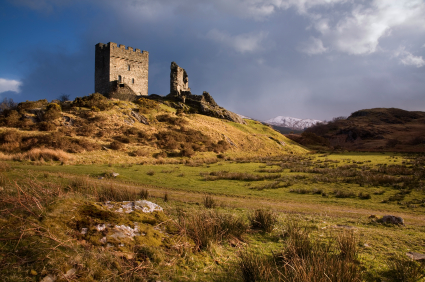 Clore Duffield Foundation
Clore Duffield Foundation
A grant-making organisation which concentrates its support on education, the arts, museum and gallery education, cultural leadership training, health and social care and enhancing Jewish life, whilst placing a particular emphasis on supporting children, young people and society's more vulnerable individuals.
Chair: Dame Vivien Duffield DBE
http://www.cloreduffield.org.uk
Creativity, Culture and Education
An organisation funded by the Government to create new and innovative cultural programmes across England, forging strategic links between schools and the arts. They run Creative Partnerships, a project to match schools with creative practitioners, and Find Your Talent the Government’
s pilot project aimed at ensuring children have access to the wide range of quality and sustained cultural experiences, both in and out of school.
Chief Executive: Paul Collard
http://www.creativitycultureeducation.org
DCMS –
Department for Culture, Media and Sport
The central Government department responsible for distributing central funding to those who then distribute it further. They advise the Government on arts policy and fund the national museums in the UK.
Permanent Secretary: Jonathan Stephens
Secretary of State for Culture, Media and Sport: Ben Bradshaw (aka Culture Secretary)
Minister for Culture and Tourism: Barbara Follett
http://www.culture.gov.uk
Ecsite
A European network of science centres and museums representing 400 institutions in 50 countries. Member organisations and individual institutions are both represented. They are administered from Brussels.
Executive Director: Catherine Franche
http://www.ecsite.eu
EMF –
European Museum Forum
Under the auspices of the Council of Europe, the EMF is a lobbying and information sharing organisations, representing the 45 member states of the Council. It is administered from Bristol.
Chair: Stephen Harrison
http://www.europeanmuseumforum.eu
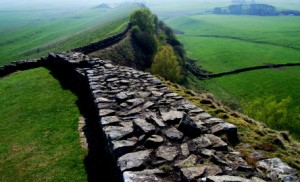 English Heritage
English Heritage
A membership organisation for the general public who want to register their support for built and cultural heritage. It is separate from central government, although it is part funded by them, and is the nation’
s statutory advisor on the historic environment eg, listed buildings and planning applications.
Chief Executive: Simon Thurley
http://www.english-heritage.org.uk
HEFCE –
Higher Education Funding Council for England
Promotes and funds high-quality, cost-effective teaching and research in higher education across England. Their Museums and Galleries Fund helps create links between their stakeholders and the heritage sector.
Chief Executive: Sir Alan Langlands
http://www.hefce.ac.uk
HLF – Heritage Lottery Fund
One of the ‘good causes’ of the Lottery in the UK, some of the money from each ticket sold ends up being distributed by HLF to museums, parks, historic places, and projects working on archaeology, the natural environment and cultural traditions. Organisations can apply for grants of varying sizes for specific projects, but not core funding. Or if you’
re looking to make a really big bid in the future, HLF can also support the research and development stage of your bid with a smaller award (eg, working with designers/architects/surveyors before submitting a full proposal.) Each region of the UK has a dedicated team and decision-making panel.
Chief Executive: Carol Souter
http://www.hlf.org.uk/english
Historic Scotland
Historic Scotland is an executive agency of the Scottish Government, charged with safeguarding the nation’
s historic environment and promoting its understanding and enjoyment on behalf of Scottish Ministers.
Chief Executive: John Graham
http://www.historic-scotland.gov.uk
International Council of Museums
With formal relations to UNESCO, this international body is a membership organisation of museums and professionals committed to the conservation, continuation and communication to society of the world's natural and cultural heritage, present and future, tangible and intangible. There are 26,000 members, 115 national committees and 30 international committees. They promote International Museum Day annually (May 18) and are the guardians of the International Code of Ethics for Museums.
President: Alissandra Cummins (Barbados Museums and Historical Society)
http://icom.museum
Museums Association
The independent membership organisation for museum professionals and organisations in the UK. As a lobbying body the MA makes recommendations to the sector about professional issues – such as salary and HR guidelines, collections guidance and sustainability –
but also represents the independent views of the sector to Government and the wider arts sector. In addition to a annual conference and a large training and events programme, the MA publishes the monthly magazine Museums Journal and the quarterly journal Museum Practice.
Director: Mark Taylor
President: Stuart Davies
http://www.museumsassociation.org
MLA - Museums, Libraries and Archives Council
The non-departmental public body sponsored by DCMS to promote best practice and strategic leadership across the sector. They commission research and support the sector with financial grants. Until 2000 the Museums and Galleries Commission and the Library and Information Commission carried out this work. They were brought together as Re:source in 2000 and have since been rebranded again as the MLA. Much of the MLA’s direct contact with museums in the nine English regions has been carried out, until recently, by MLA’
s Regional Agencies, but this work has now been brought into the main body of the organisation.
Chief Executive: Roy Clare
http://www.mla.gov.uk
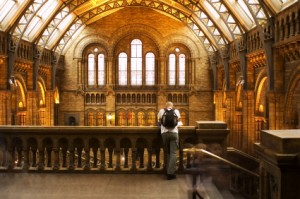 NMDC – National Museums Directors Conference
NMDC – National Museums Directors Conference
A regular meeting of the directors of the national museums and galleries, along with some major libraries and archives. Although their organisations are funded by the Government, this influential group is completely independent and lobbies on behalf of the nationals and the heritage sector in general. They commission practical reports and advise on best practice in the sector. It comprises the biggest names in museums in the UK.
Current Chair: Michael Dixon (Director, Natural History Museum)
http://www.nationalmuseums.org.uk
NMNI – National Museums Northern Ireland
A board of trustees who oversee the management, care, interpretation and presentation of the national museums across Northern Ireland. (Formerly MAGNI –
Museums and Galleries of Northern Ireland.)
Chief Executive: Tim Cook
Chair: Dan Harvey OBE
http://www.nmni.com/index.php
The National Trust
An independent charity with 3.5 million members which seeks to protect and open to the public over 300 historic houses and gardens and 49 industrial monuments and mills. They also care for forests, woods, fens, beaches, farmland, downs, moorland, islands, archaeological remains, castles, nature reserves and villages across England, Wales and northern Ireland. Although independent of Government, they are hugely respected and influential. They advise on the development of new projects on and near land under their jurisdiction and are a lobbying and campaigning body for many causes.
Director-General: Dame Fiona Reynolds
http://www.nationaltrust.org.uk
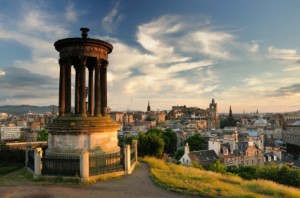 National Trust for Scotland
National Trust for Scotland
The conservation charity that protects and promotes Scotland's natural and cultural heritage for present and future generations. With over 297,000 members it works in a similar way to the National Trust (above).
Chief Executive: Kate Mavor
http://www.nts.org.uk
SAC – Scottish Arts Council
Like ACE and ACW, the SAC is the lead funding and development organisation for arts across Scotland. Their funding comes from the Scottish Government, but they also distribute Lottery and DCMS money. This year they will merge with Scottish Screen to become a new organisation called Creative Scotland 2009 Ltd with Ewan Brown as its new Chair.
Chief Executive: Jim Tough
http://www.scottisharts.org.uk
Why not bookmark this page and refer to it each time you come across a new organisation. And if there's someone missing from this list, do get in touch and let us know.
Author:
Steve Slack is a writer and researcher based in London
www.steveslack.co.uk


